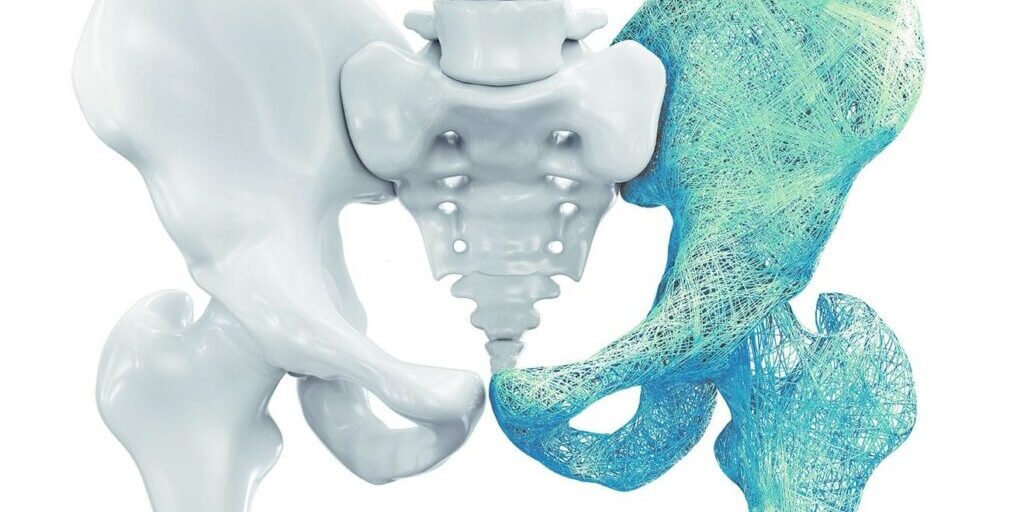In patients with some malignant and non-malignant haematological diseases, such as leukaemia and myeloma, autologous and allogeneic haematopoietic stem cell transplantation (HSCT) may be the treatment of choice.
Due to ongoing advances in transplantation techniques and supportive care, HSCT patients are now living longer, which is subsequently increasing the patient population suffering from the late effects of HSCT, of which, bone loss and its consequence, fragility fractures, lead to substantial morbidity.
The prevalence of osteopenia in adults four to six years after HSCT is close to 50 per cent, with the prevalence of osteoporosis approaching 20 per cent 2 years after transplantation. Furthermore, fracture risk also increases after HSCT, with 1 retrospective study (comprising 7,620 patients undergoing HSCT over 15 years) revealing 8 per cent of patients sustained fractures.
Despite mounting data that bone loss is common post-HSCT, many HSCT patients are not monitored for bone fragility, and most do not receive prophylactic intervention, despite a possible increased long-term fracture risk.
An Executive Summary just published in the Journal of Bone Oncology, titled ‘Osteoporosis management in hematologic stem cell transplant recipients: Executive summary’, authored by The International Osteoporosis Foundation (IOF) Committee of Scientific Advisors Working Group on Cancer and Bone Disease, provides a helpful management algorithm, and succinct guidance, building upon their previous state-of-the-art review published in 2018.
Following allogeneic HSCT, patients are at substantial risk of bone loss due to the HSCT preparative regimen, induction of premature menopause, weight loss, and as a result of medications used in the prevention and treatment of acute and chronic graft-versus-host disease (GVHD).
Currently, most guidelines recommend DXA examination within 1 year of transplant. However, the IOF Committee of Scientific Advisors Working Group on Cancer and Bone Disease further recommends that BMD is measured prior to HSCT, due to prior morbidity and exposure to chemotherapy agents that may be potentially harmful to bone. They state a DXA scan prior to HSCT can help identify patients with existing osteopenia/osteoporosis, who could benefit from early intervention to prevent HSCT-related bone loss.
In addition to monitoring BMD periodically, the Executive Summary co-authors also recommend a well-balanced diet, involving an adequate intake of calcium, protein and Vitamin D, regular weight-bearing and muscle strengthening exercises, and avoidance of tobacco and excessive alcohol intake. Dairy intake should be encouraged, although calcium supplements can also be used. Assessing a patient’s baseline 25-OH-vit D prior to HSCT is also recommended to identify patients who may require a loading dose of vitamin D3 prior to undergoing transplant. A loading dose of vitamin D3 prior to HSCT ensures vitamin D sufficiency throughout the critical first three months, post-transplant.
With regard to osteoporosis pharmacotherapies, bisphosphonates, such as pamidronate or zoledronic acid, are the most studied therapies for the prevention of HSCT-induced bone loss, and in some cases, to increase bone mass. Patients receiving prolonged courses of glucocorticoid for GVHD are at high risk for bone loss and fracture, and therefore, prophylaxis with bisphosphonates should be considered.
In addition, in younger women experiencing treatment-induced amenorrhoea following transplant, oestrogen-based Menopausal Hormone Therapy (MHT) may prove an effective antiresorptive therapy, and may also show additive benefits regarding cardiovascular disease. However, more research is needed into MHT’s efficacy in preventing glucocorticoid-induced bone loss is required.
Chair of the IOF Committee of Scientific Advisors, and Professor of Rheumatology and Clinical Epidemiology at the MRC Lifecourse Epidemiology Unit, University of Southampton, Professor Nicholas Harvey, UK, states:
“Unfortunately, too many haematopoietic stem cell transplantation recipients are not being monitored and treated for bone fragility, despite the fact that poor bone health is a significant comorbidity post- HSCT.
“We therefore urge all physicians who care for HSCT recipients to take action, to protect their patients’ long-term bone health,” said Prof Harvey.
“It is important to keep in mind that fragility fractures can be severely debilitating, with resulting loss of physical independence and quality of life.”
For more information, read the full Executive Summary here.





